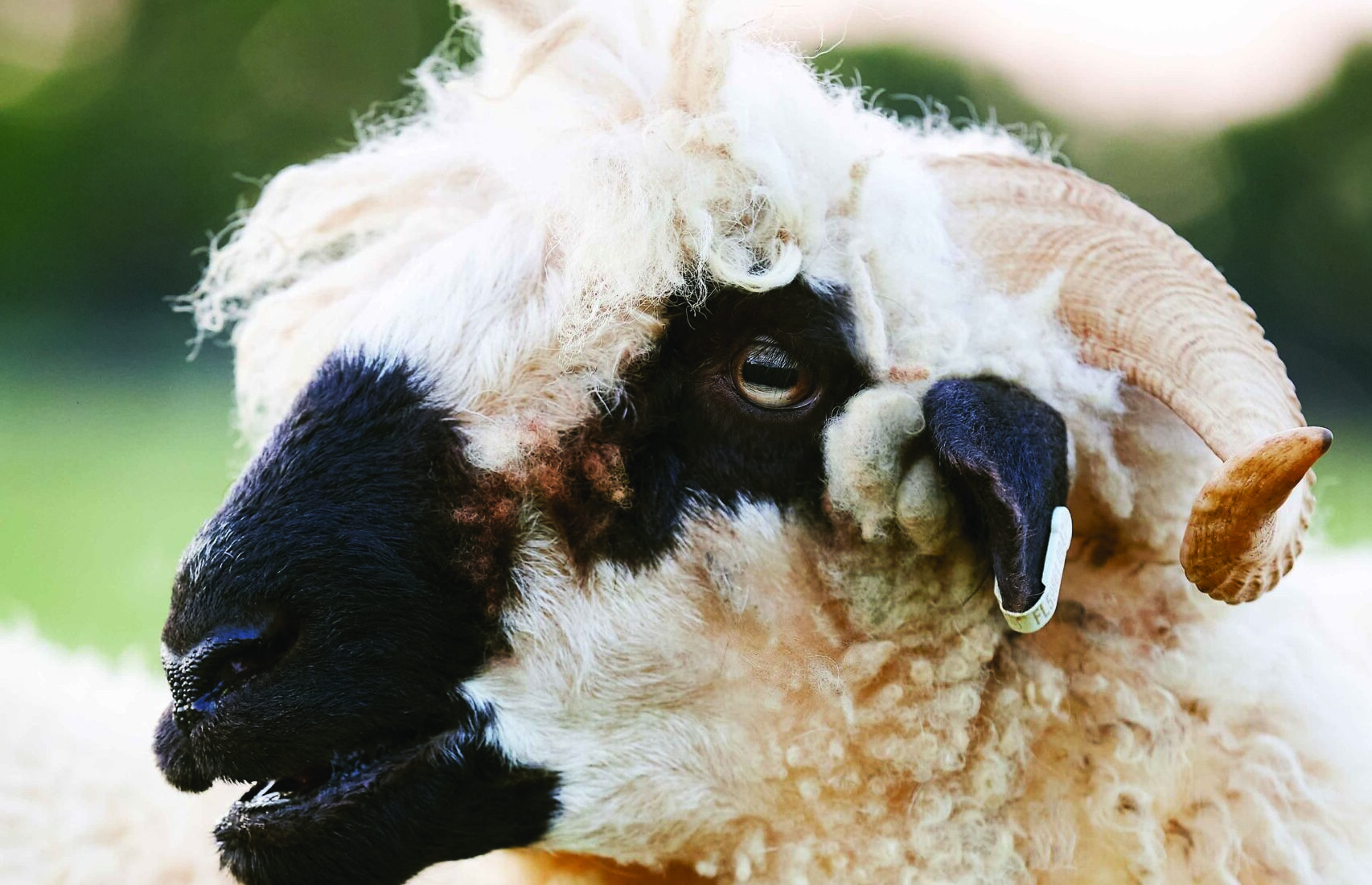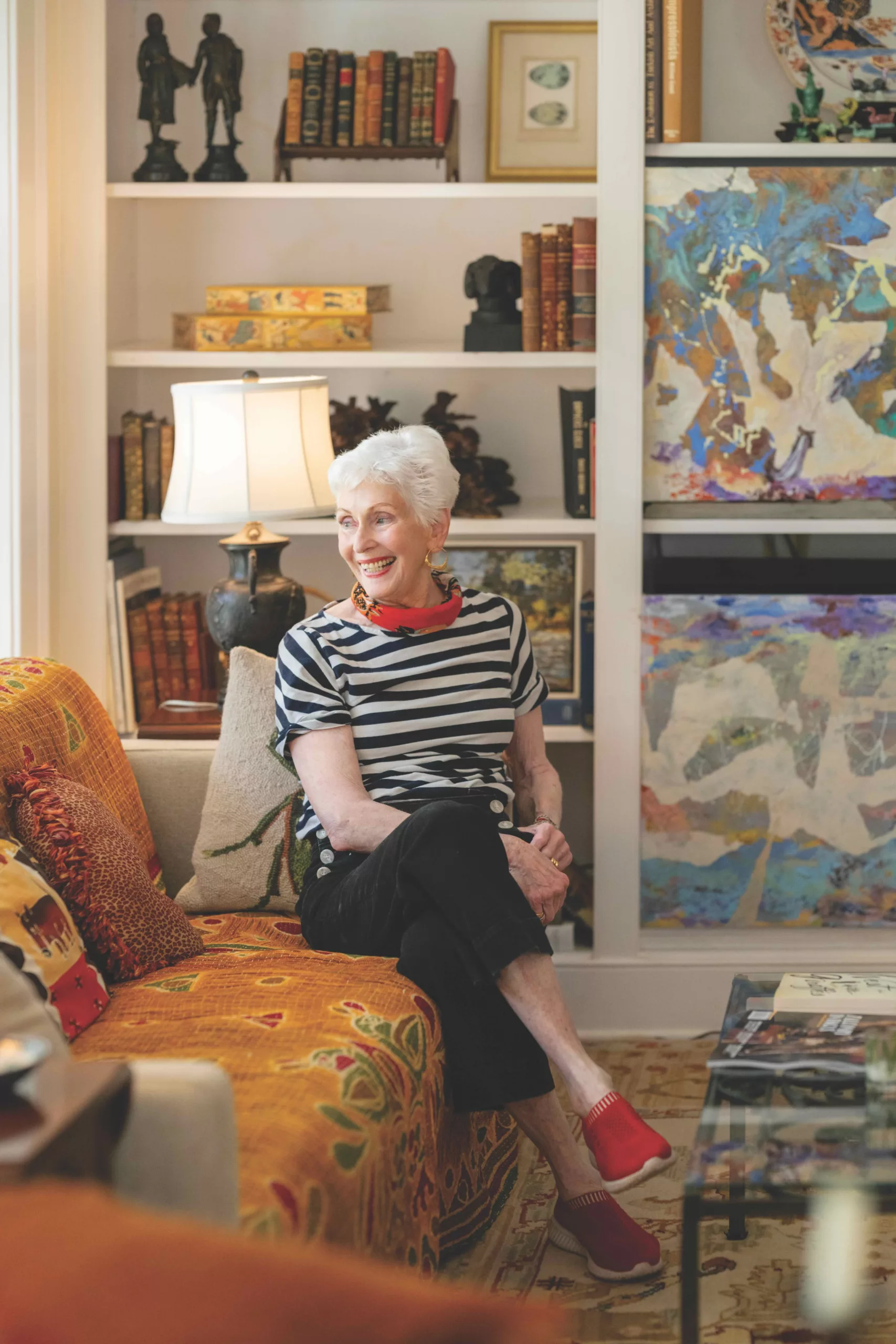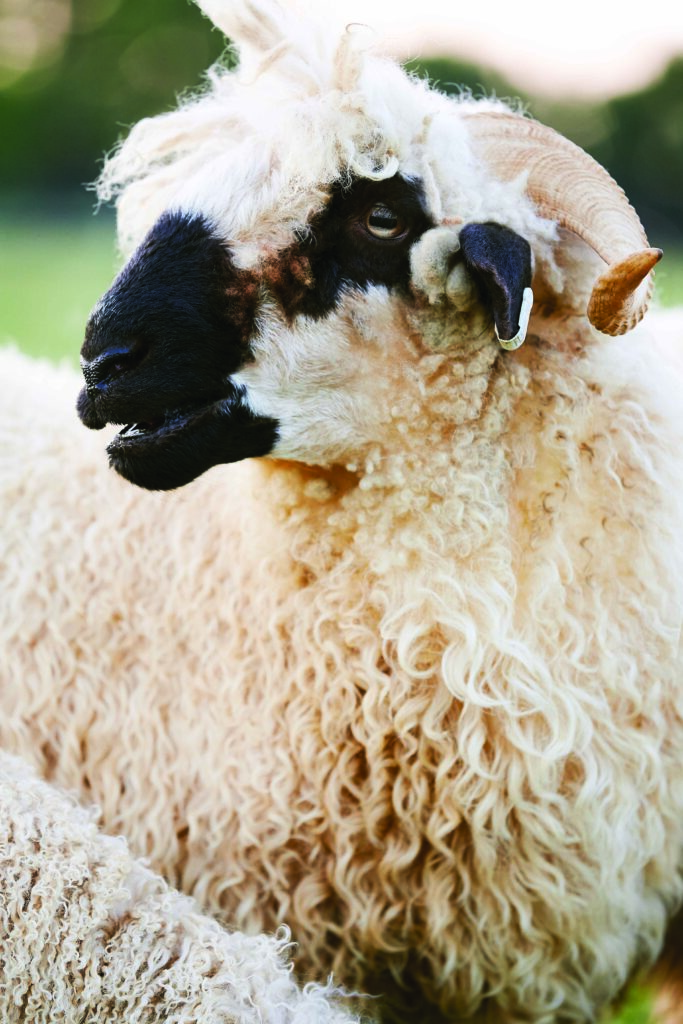
Lamborghini, Loverboy, Lighting, Limited Edition (“Ellie” to her friends), Lancelot, and Legend are just a few of the Valais Blacknose sheep at BoulderBrook, Candie and Greg Francher’s Dinwiddie farm.
The sheep graze among the buttercups, and the lambs bleat while prancing around hoping for a comfy lap to snuggle in. With white, wooly fleece and a black mask over its face, dark splotches on its knees and hocks,
and one “bum spot” under the tail, the spiral-horned creatures are the perfect companions to any farm.
Perfect Personalities
“They’re very curious. They love other animals—they follow our cats and ducks around everywhere,” Candie Francher says, adding that the sheep’s friendliness and cuteness are what drew her to the breed. “They’re therapy for me. I can just sit there and hold them, and they love it. And when you’re stressed out, nature is therapy.”
The rare breed comes from Switzerland. Bringing them to Virginia, say the Franchers, was a long process, one that started with the Scottish Blackface sheep and breeding their way up to the Valais Blacknose. The Franchers had one of the first purebreds of the U.S. Like everything worth having, the Valais Blacknose is incredibly cute and rare enough to be cool, while sporting an astronomical price tag. Some lambs can fetch $20,000—depending on the purity, which is categorized by F5–F1 labels, F5 being the higher purity.
Getting there, says Candie, was no easy feat, adding, “It’s work, but it’s worth it.” Greg adds that once you adopt the farm life, there’s no going back. “She just loves fluffy animals,” Greg says of his wife’s fondness for four-legged creatures.
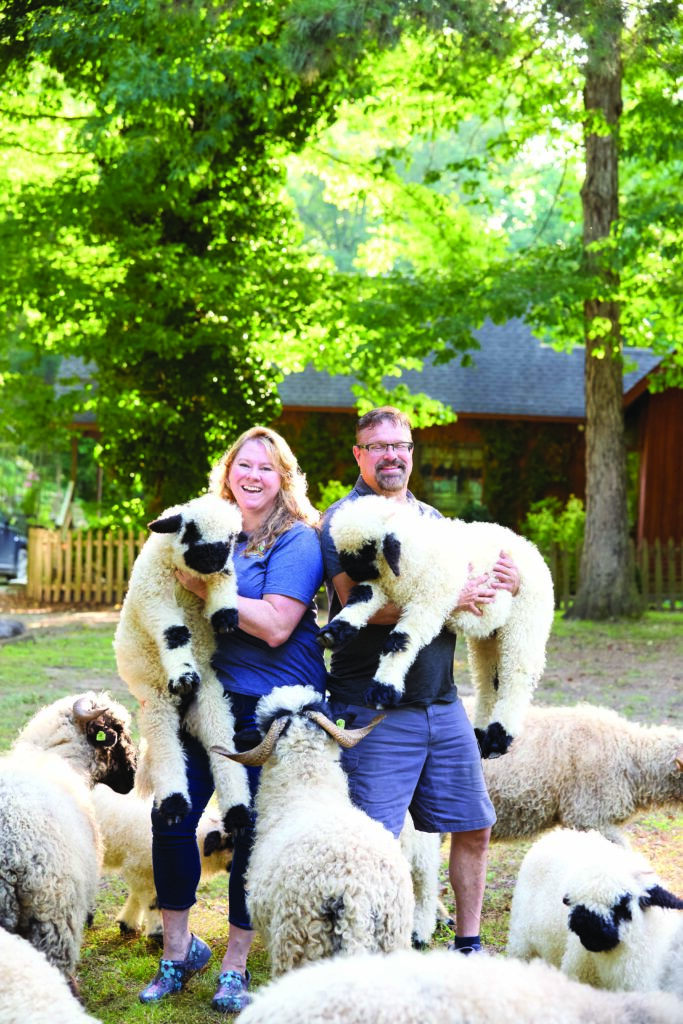
The Franchers pick up their purebred Valais Blacknose sheep.
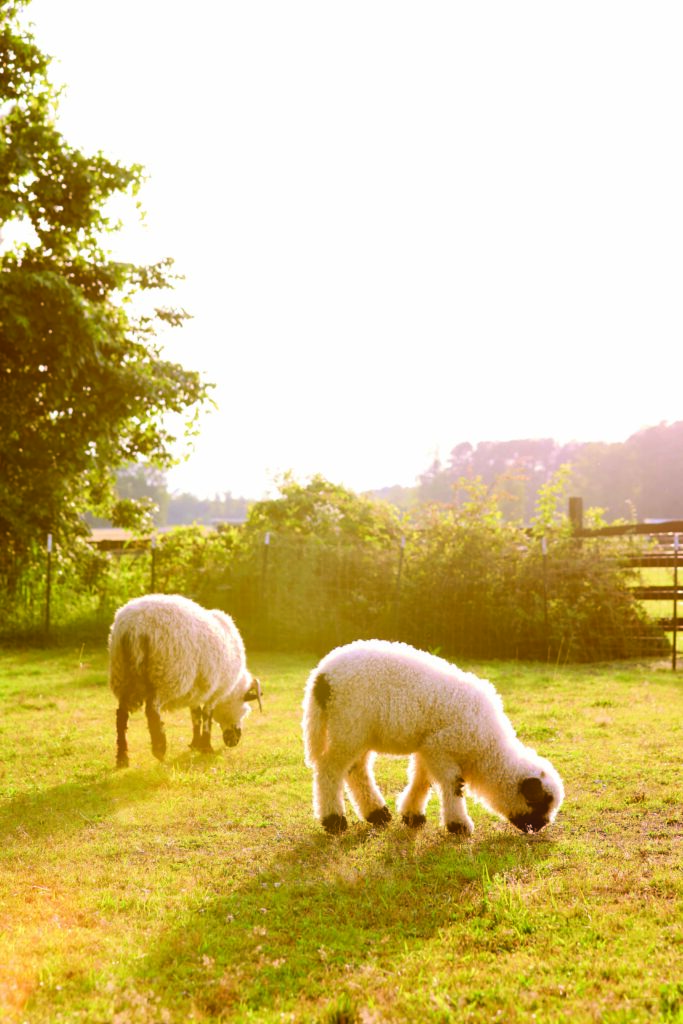
Purebred Limited Edition grazes by F1 Iris, the surrogate who carried her (in background).
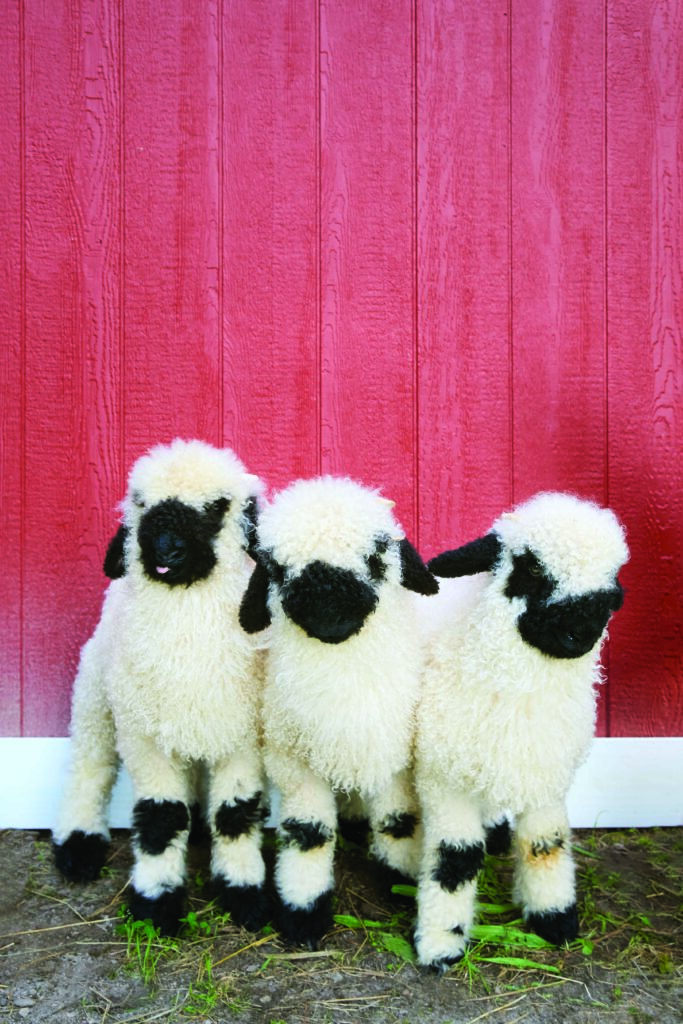
BouldberBrook’s purebred Valais lambs Lightning, Loverboy, and Limited Edition pose for the camera.
Cuteness Factor
The Virginia Valais Blacknose requires shearing at least twice a year to a short length, straying away from the breed’s typical Swiss Alps-suited locks, which take the form of ringlets the longer it grows. Regular shearing helps them acclimate to weather in Virginia. Their wool is perfect for artisans. It takes dye very well and is ideal for felting and spinning, says Candie. It’s typically used for carpets, bags, and coats due to its density and coarse nature. She says it’s not something you want to wear against your skin.
“People buy them as pets,” says Andrew Chippendale of Bristol Farm located in Round Hill in Loudoun County. “They’re adorable—they’re a good time-waster because you spend all day playing with them. They’re a lot smaller than a cow and a lot less needy than a horse, so it’s a good introduction to livestock.”
Chippendale got his hands on his first ram in 2023. “It was more cost-efficient to buy a purebred ram, and, last summer, we bought one that was from an embryo from New Zealand. It was a little bit of a challenge and a bit of excitement, but it went well.” He named him Kevin.
“The other day, Kevin was lying down in the field,” says Chippendale. “I walked up, and I laid down on him and used him as a pillow. He’s the sweetest thing ever—so cuddly and loveable. He has the life.”
Ben Yoder, of Cyrus Ridge Farm in Waynesboro, has been raising the Valais Blacknose since 2022. He recently added miniature Highland cattle to his collection. In addition to their giant adorableness factor, he was looking to add livestock diversity in his agritourism business and, of course, another variety of cute, little barnyard what-nots for people to ooh and aww over while on farm tours. Which happens a lot.
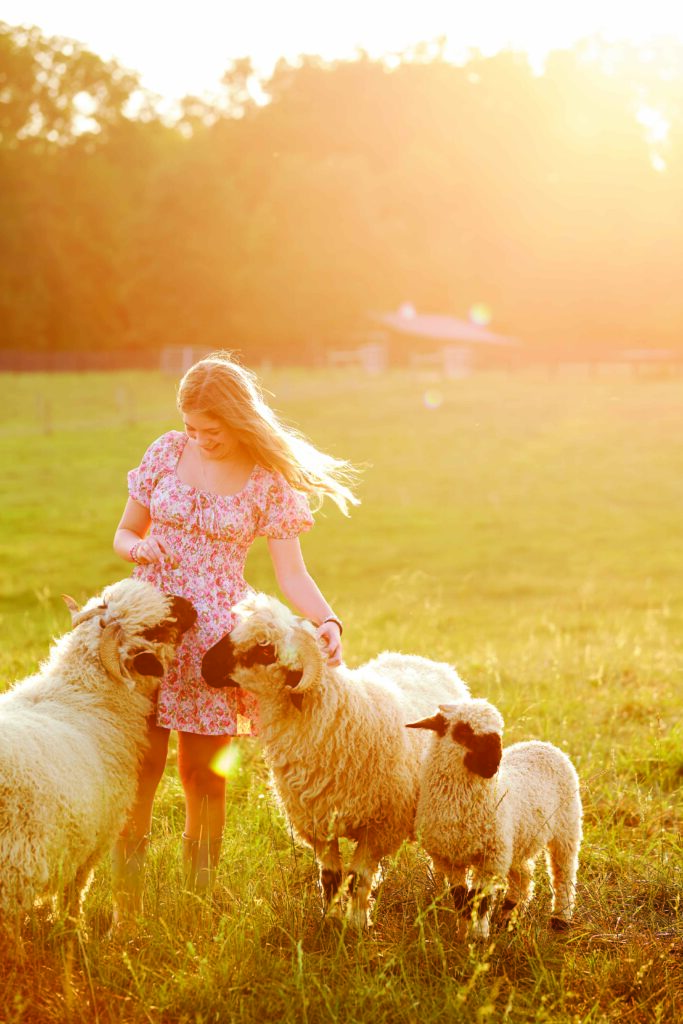
Yoder bought a pair of F2 sheep, and purchased a group of embryos used on his other sheep which were recipients. “It’s a complicated process,” he says. “We have a vet that did all the technical work.” One cost savings is that the recipient ewes do not have to be the same breed—you can use a Valais fertilized embryo on any recipient ewe.

Isn’t a Sheep Just a Sheep?
But when you can buy a regular, old American sheep for the cost of a fully satisfying fast food dinner for two ($40 according to Google searches), why would you buy one for the price of a used Audi A3? Isn’t a sheep, at the end of the day, just a sheep?
Not exactly. Farmers unanimously agree that these sheep are far more adorable and definitely more unusual than a run-of-the-mill American sheep. It is, as so many American imports are, the matter of the aesthetic and the vibe. “Right now, the rarity is driving the prices,” says Yoder. “And there’s also a cute factor that’s playing a role. But now especially, it’s definitely the rarity.” He describes the sheep as being very docile, almost with puppy-like attitudes. “They’re very friendly,” he continues, “and they’re easily socialized. Once they are, they become almost like a dog.”
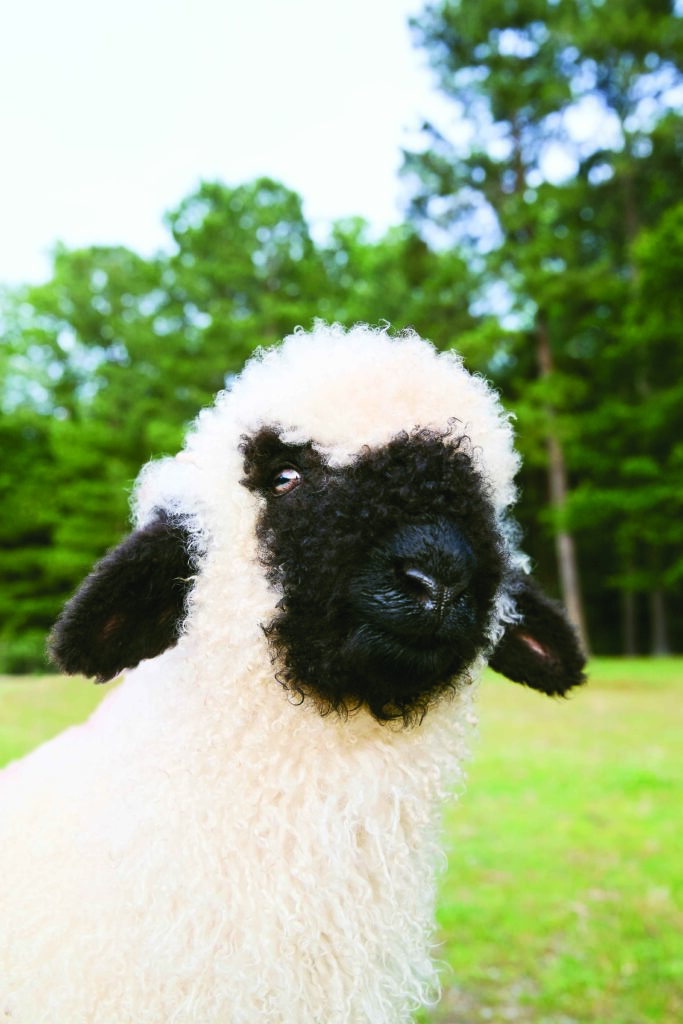
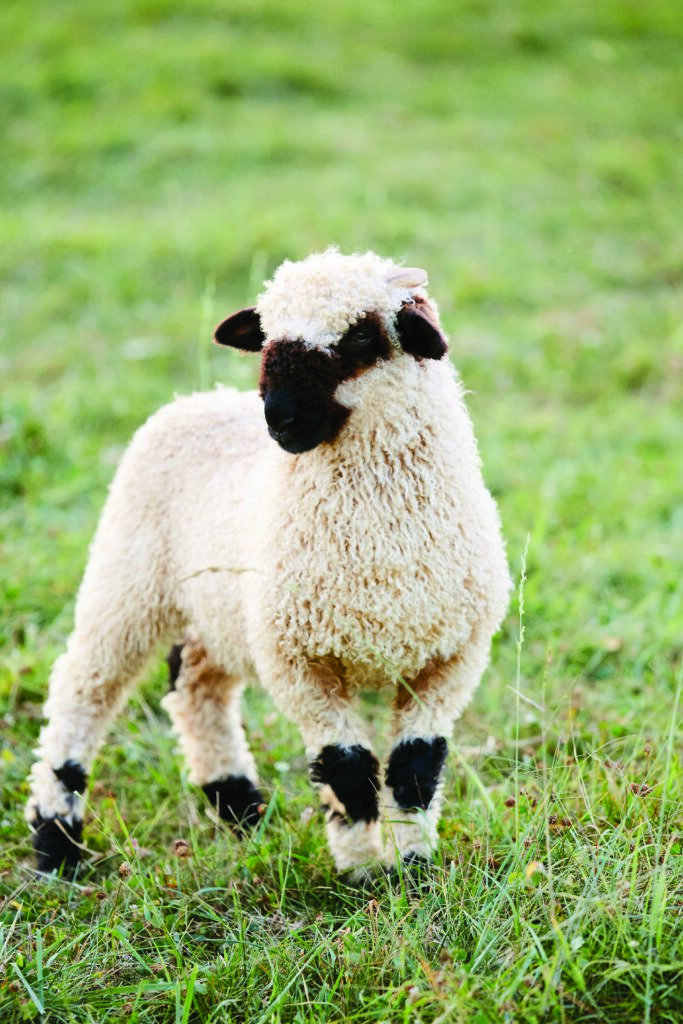
Sheep Science
Valais Blacknose sheep made their way to the U.S. in the last decade as part of “breed-up” programs that start with semen or fertilized embryos used to inseminate or implant in a ewe who then carries the embryo for a gestational period of about five months before a lamb is born. Then, the cuteness begins—eventually.
The first round produces an F1, which is 50 percent Valais Blacknose, then you take the female F1—if you have a male, you can’t move forward—and cross it with 100 percent Valais Blacknose and you get an F2, which is 75 percent pure. Then you keep going, assuming you get a female each year (but you don’t always), and you get an F3 at 87.5 percent, an F4 at 93.75 percent and then an F5 is 96.88 percent.
A purebred ewe, in an F5 generation, can sell from $15,000 and up to $20,000. In crossbred sheep, prices range. The females sell for more than wethers (neutered males) as you can use them for the breed-up program (if you choose). The overall price of any sheep varies on the percentage of purebred, markings, and conformation—or quality—of the sheep, which is measured against the standard. If you want a purebred sheep, as opposed to a lesser-than-purebred fluff ball, it’s a waiting game.
But, if everything works out, once you do have one of these sheep, what do you do with it? If you’re not showing them, you basically just hang out with them on your hobby farm.
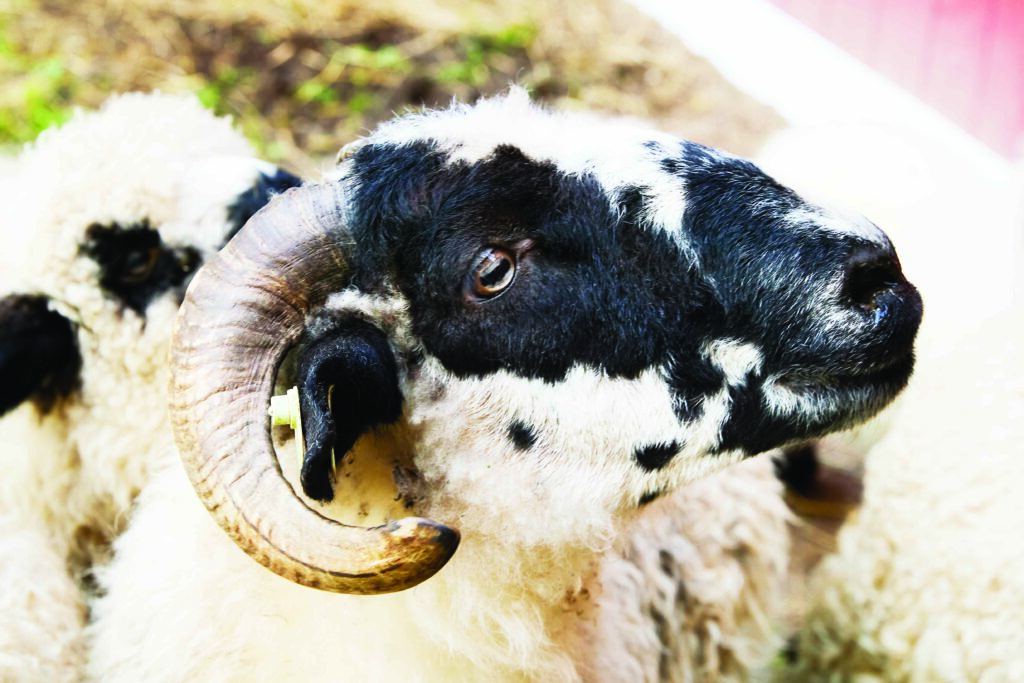
The Waiting Game
If you’re desperate for one on your farmette, you may find it prudent to wait a little longer. “What we anticipate is that as their popularity and numbers grow here in the U.S., that prices will come down to a more reasonable level, which is probably good for the industry as a whole,” says Yoder. “And we anticipate that it’ll plateau at likely around a $3,000 to $5,000 range, which is much more comparable to what you’d see in Europe for a similar sheep.”
At the same time, cuddling up to Lamborghini and Loverboy on a sunny day in a green pasture could reveal why so many find the price tag worth it.
This article originally appeared in the August 2024 issue.

